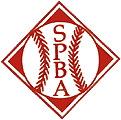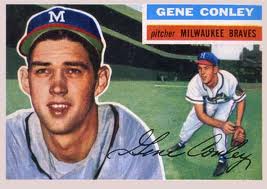This year, as I noted with disappointment in my January 9 post, the Baseball Writers Association of America threw a shutout in the Hall of Fame balloting. While the steroids era “tainted” the 2013 election process, I felt that there were candidates who deserved election – and that the BBWAA could have made more of a statement by voting in a “clean” candidate or two and denying the “suspect” superstars on the list. I was pretty sure that most fans would feel pretty much the same way – and that a fan vote would have turned out differently. With that in mind, I sent out my own ballot – to Ballpark Tours Hot Stove League Banquet and Annual Tour participants, fantasy baseball league opponents and baseball-fan friends. The results are in – and I stand corrected.
With just over 50 ballots in, the results of the BBRT balloting were not that different from the official BBWAA vote – and no one was elected. In the BBRT ballot, Craig Biggio topped all candidates with 65.3% of the vote, just as he topped the BBWAA ballot at 68.2%. Jack Morris and Mike Piazza tied for second on the BBRT ballot at 61.5%, while in the official voting, Morris finished second (67.7%) and Piazza fourth (57.8%). The main outlier at the top of the ballot was Jeff Bagwell, who finished fifth in the BBRT vote, but with only 38.5%, while the writers has him third at 59.6%.
BBRT voters were a bit harder than the BBWAA on PED-suspect candidates: Here are some notable with the BBRT vote percentage followed by the BBWAA percentages: Barry Bonds (19.2/36.2); Roger Clemens (19.2/37.6); Mark McGwire 15.4/16.9); Sammy Sosa (11.5/12.5); Rafael Pameiro (11.5/8.8).
I did take part in another mock ballot this year – conducted by the national Baseball Bloggers Alliance. In that vote, one candidate – Jeff Bagwell – was elected, with 76% support. As in the BBRT and BBWAA votes, Biggio and Piazza finished close with 69% each, but Morris fared much worse at only 32% (not too many folks who attended Game 7 in 1991, apparently). The suspect list also fared better with the blogger group. Bonds got 62%, Clements 56%, McGwire 35%, Sosa 21% and Palmeiro 15%. Also of interest to me was the fact that Lee Smith, who captured 57.6% of the BBRT votes and 47.8% of the writers’ ballots, got only 25% from the bloggers’ group. (Visit the Baseball Bloggers Alliance Website for the full results of thee vote. )
BBRT saw three prevailing attitudes in the balloting, in the following order of frequency (I’ll share some of the comments I received at the end of this post):
1) Don’t let the suspects in, but I will vote for a couple of qualified “clean” candidates;
2) Don’t let the suspects and there are no candidates I see worthy of first-ballot election, and few or no returning candidates that really command my vote;
3) Let the records stand for themselves, as long as MLB has not declared candidates ineligible, like Pete Rose and Shoeless Joe Jackson, I will vote based on the numbers;
4) I think the game’s gone bad and here’s a blank ballot in protest.
So, here are the final BBRT results, with each candidate’s vote percentage followed by the BBWAA’s official tally:
Craig Biggio – 65.3% (68.2)
Jack Morris – 61.5% (67.7)
Mike Piazza – 61.5% (57.8)
Lee Smith – 57.6% (47.8)
Jeff Bagwell – 38.5% (59.6)
Edgar Martinez – 30.7% (35.9)
Alan Trammel – 30.7% (33.6%)
Roger Clemens – 19.2% (37.6)
Barry Bonds – 19.2% (36.2)
Curt Schilling – 19.2% (38.8)
Tim Raines – 19.2% (52.2)
Don Mattingly – 15.4% (13.2)
Mark McGwire – 15.4% (16.9)
Sammy Sosa – 11.5% (12.5%)
Larry Walker – 11.5% (21.6)
Rafael Pameiro – 11.5% (8.8)
Dale Murphy – 7.7% (18.6)
Bernie Williams – 7.7% (3.3)
Fred McGriff – 3.8% (20.7)
Julio Franco – 3.8% (1.1)
Note: The following BBWAA vote-getters did not get votes in the BBRT balloting: Kenny Lofton (3.2%, BBWAA) and Sandy Alomar Jr. (2.8%).
To wrap up, here excerpts from some selected comments BBRT received with its ballots.
I’ve got a real problem with voting for suspected PED-users – particularly on the first ballot. Beyond that I find this year’s HOF class uninspiring – and look forward to next year with Maddux, Glavine and the Big hurt eligible. BK
If there was ever a year to justify a shutout, this would be it. It’s a pretty uninspiring ballot, all the more compared to recent years and what’s to come. On the drug issue, at this point I’m not willing to vote for them – realizing that ‘them’ is a slippery slope in some cases. My view may change over time as we have a longer historical lens and more knowledge with which to work. In 10 years, will I feel differently about Bonds or Clemens? Can’t answer that.
One other thing: I really believe there’s a distinction between a Hall of Famer and a “first-ballot Hall of Famer,” … I think that first-ballot election signifies being among the elite of the elite in all criteria of the game: Voting shall be based upon the player’s record, playing ability, integrity, sportsmanship, character, and contributions to the team(s) on which the player played. HS
I’m tired or reading about drugs and money, rather base hits. They’re spoiling the game, so I vote a blank ballot. LW
I believe that the steroid users should never get in. If they can continue to keep Pete Rose out for gambling and refuse to acknowledge his accomplishments on the field sans drugs, then there is no way there is justification for putting the druggies in. I don’t care how many others do it and I don’t care how it enhances performance. KC
Why doesn’t MLB take these guys off ballots? It seems to me that they asking voters to make up minds for MLB. Bud needs to step up and deny these guys (entry) into HOF as a ban. PC
I agree with the MLB Baseball writers in not electing players into the hall every year. I think that there are some players that should be in, Jack Morris, Jim Kaat but the vote is the best process that can be used and if they do not concur for that year than so be it. It just makes the membership to the hall that much more exclusive … The debate that this year’s vote has brought on is what makes this sport so wonderful and timeless. SB
I am of the belief that it is not possible to tell who did or did not inhale, so trying to be drug-cops is, in the end ineffective. So my ballot is based on the fact that these players are part of the history of the game. It seems to me there are three key issues:
1) As fans of the national pastime, we accept the scoreboard as it is, regardless of any extenuating circumstances: no asterisks, no questions. The Game is the Game; the record is the record.
2) Betting on baseball is bad, Bad, BAD, REALLY BAD. Thou shalt forever be banned from the Hall. Is it a greater sin to bet on the game than to use drugs to improve your performance? If you agree, Pete and the Black Sox shall be forever banned, but Sammy, Mark et al. shall be eligible. I am not wise enough to make this call so close to the bag.
3) Performance enhancing drugs are worse /are not as bad as betting on the game. If you used steroids, you should/should not/should/should not/should/should not be admitted to the Hall of Fame. You hit the ball more, you scored more runs, but was it you or the drugs in your body allowed you to be that good? How well would Sammy, Roger, Barry, and Mark done if they had not used drugs? They might have done just as well. They were, after all, really good players. Sadly, we shall never know. What we do know now is that certain players were banned by the Commissioner for betting on the game, regardless of their performance record. End of story. If Pete Rose is ever inducted, I will have watched my last MLB game, unless at the same moment Shoeless Joe is also forgiven his sins. To the best of my understanding, their crimes were only about money. From my professional perspective, using drugs to enhance performance is a deeper, more fundamental violation of the rules of the game. It seems to me that those who voted this year unambiguously agreed. So it should remain. JT




























